
Toledo: A Timeless Jewel of Spain
Discover Toledo, Spain's City of Three Cultures, where medieval charm, rich history, and artistic heritage converge in a breathtaking hilltop setting.
Toledo, known as the 'City of Three Cultures', is a mesmerizing blend of Christian, Muslim, and Jewish heritage. Set on a hill above the plains of Castilla-La Mancha, this UNESCO World Heritage site captivates visitors with its stunning medieval architecture, winding cobblestone streets, and rich history. Wander through the narrow alleys of the old town and discover the awe-inspiring Toledo Cathedral, one of the most remarkable Gothic structures in Spain. The Alcázar fortress dominates the skyline and offers panoramic views of the city and the Tagus River. The city's Jewish Quarter is a labyrinth of ancient synagogues, including the famous Santa María la Blanca, and charming shops selling traditional crafts. Toledo is also a city of art, home to the renowned painter El Greco. Visit the El Greco Museum to see his masterpieces and gain insight into his life. The city's culinary scene is a delight for food lovers, featuring local specialties like marzipan and game meats. Whether you're exploring its historic landmarks or savoring its local flavors, Toledo promises an unforgettable experience.
Local tips in Toledo
- Wear comfortable shoes as the city is full of steep streets and cobblestones.
- Visit the Toledo Cathedral early in the morning to avoid crowds.
- Take a guided tour to fully appreciate the rich history and hidden stories of the city.
- Try the local marzipan, a traditional sweet made from almonds and honey.
- Explore the city at night, when its monuments are beautifully illuminated.
Neighbourhoods in Toledo
Toledo: A Timeless Jewel of Spain
Toledo, known as the 'City of Three Cultures', is a mesmerizing blend of Christian, Muslim, and Jewish heritage. Set on a hill above the plains of Castilla-La Mancha, this UNESCO World Heritage site captivates visitors with its stunning medieval architecture, winding cobblestone streets, and rich history. Wander through the narrow alleys of the old town and discover the awe-inspiring Toledo Cathedral, one of the most remarkable Gothic structures in Spain. The Alcázar fortress dominates the skyline and offers panoramic views of the city and the Tagus River. The city's Jewish Quarter is a labyrinth of ancient synagogues, including the famous Santa María la Blanca, and charming shops selling traditional crafts. Toledo is also a city of art, home to the renowned painter El Greco. Visit the El Greco Museum to see his masterpieces and gain insight into his life. The city's culinary scene is a delight for food lovers, featuring local specialties like marzipan and game meats. Whether you're exploring its historic landmarks or savoring its local flavors, Toledo promises an unforgettable experience.
When is the best time to go to Toledo?
Iconic landmarks you can’t miss
Alcázar de Toledo
Explore the Alcázar de Toledo, a magnificent fortress and museum offering insights into Spain's rich history and stunning views of Toledo's skyline.

Santa Iglesia Catedral Primada de Toledo
Discover the breathtaking Santa Iglesia Catedral Primada de Toledo, a stunning blend of Gothic architecture and rich history in the heart of Spain.
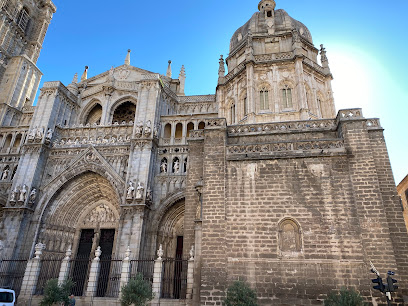
Mirador del Valle
Discover the breathtaking views of Toledo at the Mirador del Valle, an iconic viewpoint showcasing the city's historic beauty and charm.

San Martin's Bridge
Discover the majestic San Martin's Bridge in Toledo, a historic landmark offering stunning views and a glimpse into the city's architectural heritage.
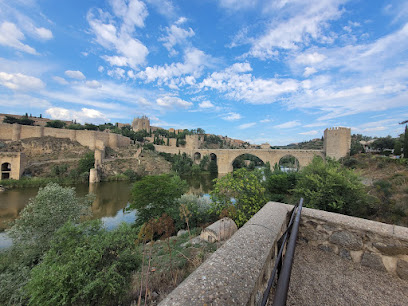
Puerta de Bisagra
Explore the historic Puerta de Bisagra, a stunning gateway rich in architecture and culture, marking the entrance to Toledo's enchanting old town.
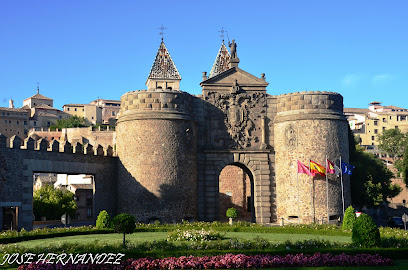
Alcantara Bridge
Discover the breathtaking Alcantara Bridge in Toledo, a stunning blend of history, architecture, and natural beauty, perfect for every traveler.
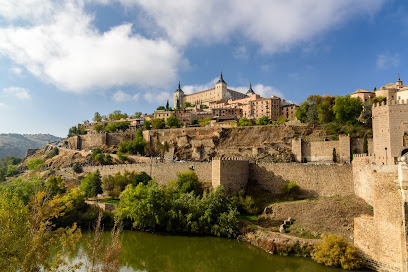
Monasterio de San Juan de los Reyes
Explore the exquisite Monasterio de San Juan de los Reyes in Toledo, a Gothic masterpiece of tranquility and historical significance.
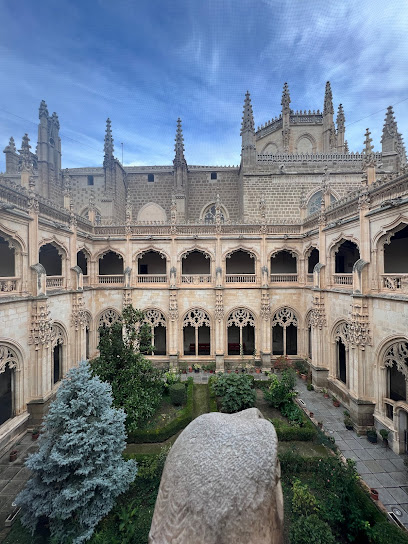
Iglesia de Santo Tomé
Discover the rich history and artistic masterpieces at Iglesia de Santo Tomé, a must-visit church in the heart of Toledo, Spain.
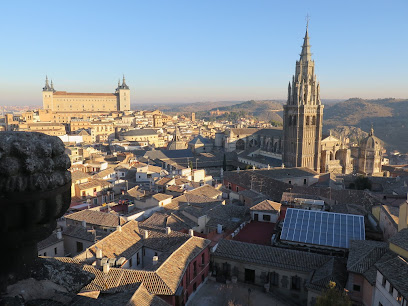
Sinagoga de Santa María La Blanca
Explore the stunning Sinagoga de Santa María La Blanca, a masterpiece of Mudéjar architecture and a symbol of Toledo's rich multicultural heritage.
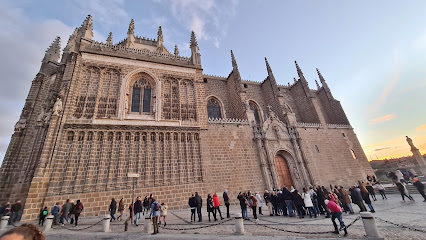
Museo del Greco
Explore the Museo del Greco in Toledo: A cultural haven showcasing the iconic works of El Greco amidst the historic charm of Spain.
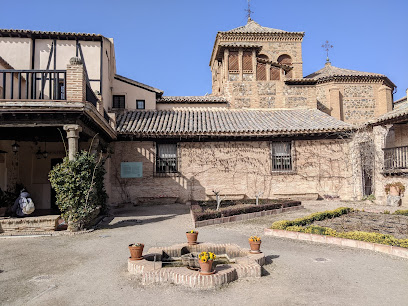
Mezquita del Cristo de la Luz
Explore the Mezquita del Cristo de la Luz, a historic mosque-turned-church, showcasing Toledo's intricate blend of Islamic and Christian heritage.

Sinagoga del Tránsito
Explore the Sinagoga del Tránsito in Toledo, a stunning museum that showcases the rich history and cultural tapestry of the Sephardic Jewish community.
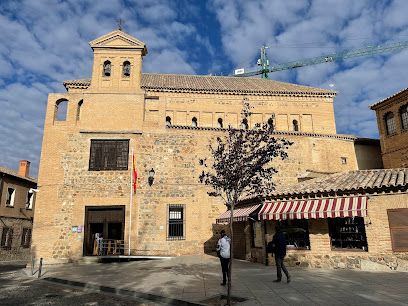
Museum of Santa Cruz
Discover the cultural gems of Toledo at the Museum of Santa Cruz, where history and art come together in a stunning 16th-century setting.

Puerta del Cambrón
Discover the grandeur of Puerta del Cambrón in Toledo, a stunning historical landmark that showcases the city's rich architectural heritage and invites exploration.
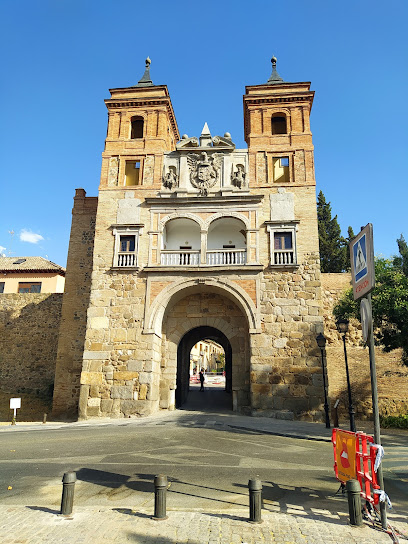
Cuevas de Hércules
Explore the enchanting Cuevas de Hércules in Toledo, where mythology and history intertwine within stunning underground caves.
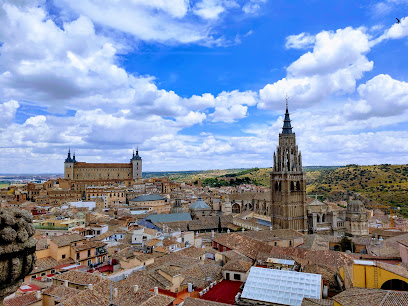
Unmissable attractions to see
Alcázar de Toledo
Discover the historic Alcázar de Toledo, an iconic fortress and museum revealing Spain's military heritage and breathtaking views over the ancient city.
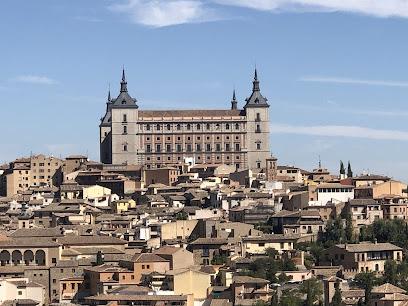
Catedral Primada de Toledo
Discover the Gothic grandeur of Catedral Primada de Toledo, a must-visit historic site in the heart of Toledo, Spain, rich in art and spirituality.
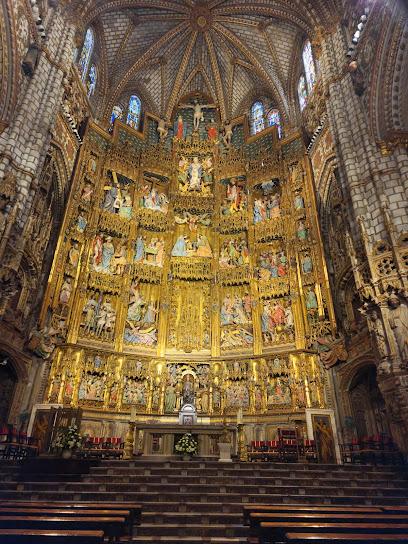
Royal Palace of Aranjuez
Explore the Royal Palace of Aranjuez, where history and beauty converge in a stunning royal retreat surrounded by magnificent gardens.
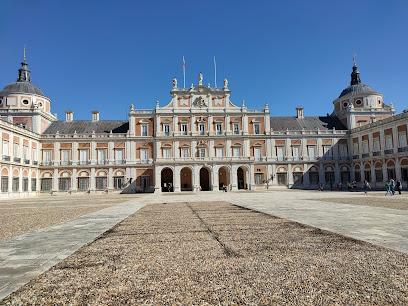
Puy du Fou España
Discover the enchanting world of Puy du Fou España, where history comes to life through spectacular shows and immersive attractions in Toledo.
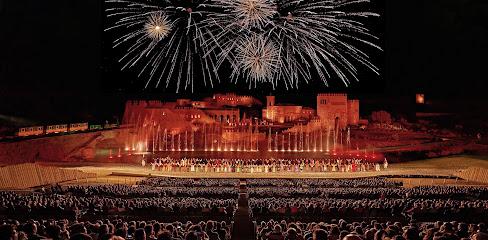
Toledo Gate
Explore the iconic Toledo Gate in Madrid, a neoclassical monument that embodies the city's rich history and vibrant culture.
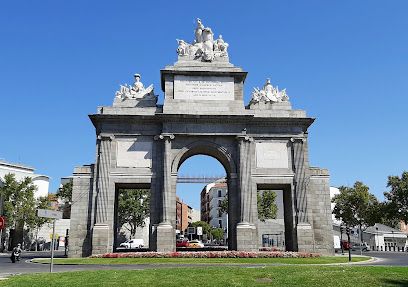
Mirador del Valle
Experience breathtaking views of Toledo's historic skyline at the Mirador del Valle, a must-see attraction for every traveler.
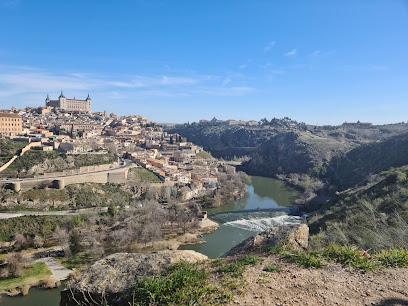
San Martin's Bridge
Discover the enchanting San Martin's Bridge in Toledo, where history and stunning views meet in a breathtaking architectural masterpiece.
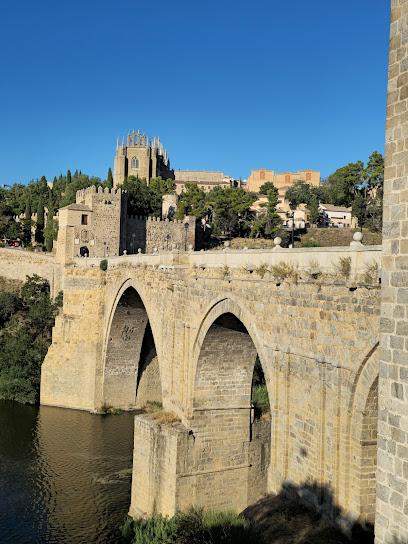
Puerta de Bisagra
Discover the architectural splendor of Puerta de Bisagra, a historical landmark that embodies Toledo's rich cultural heritage and stunning medieval charm.
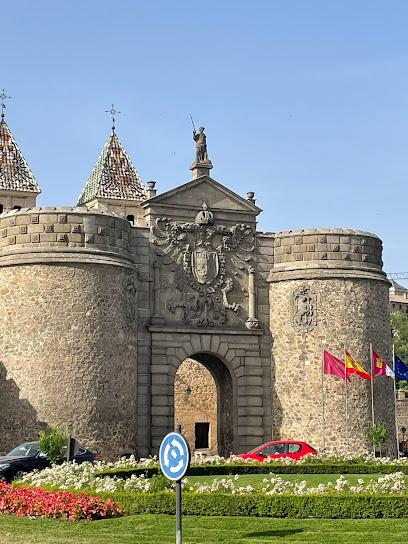
Alcantara Bridge
Discover the historic Alcantara Bridge in Toledo, a stunning Roman marvel offering breathtaking views and rich cultural heritage.
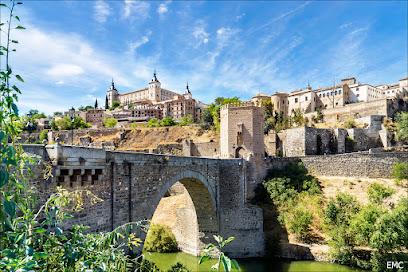
Monasterio de San Juan de los Reyes
Discover the Monasterio de San Juan de los Reyes, a Gothic masterpiece steeped in history and spirituality in the heart of Toledo.
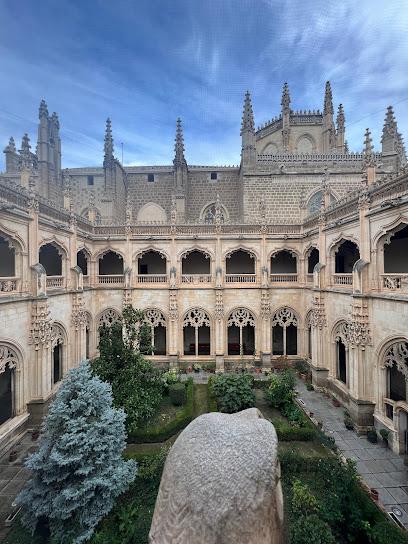
Iglesia de Santo Tomé
Explore the stunning Iglesia de Santo Tomé, home to El Greco's masterpiece and a captivating blend of art and history in Toledo, Spain.
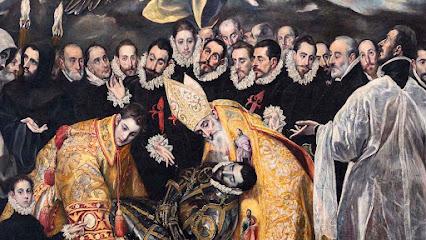
Sinagoga de Santa María La Blanca
Discover the captivating history of the Sinagoga de Santa María La Blanca, a stunning blend of cultures and architectural styles in Toledo.
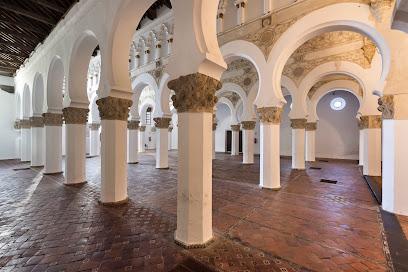
Museo de El Greco
Explore the iconic Museo de El Greco in Toledo, a treasure trove of art showcasing the genius of the famed painter and the rich culture of Spain.
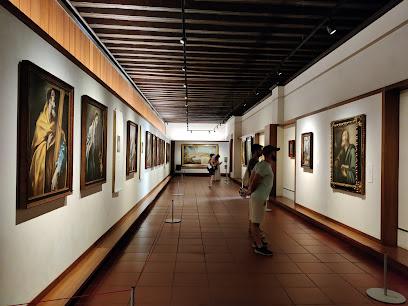
Jardín del Príncipe
Discover the enchanting Jardin del Príncipe in Aranjuez, a picturesque garden filled with vibrant flowers, serene ponds, and rich royal history.
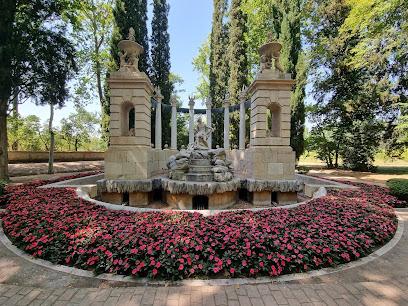
Mezquita del Cristo de la Luz
Discover the Mezquita del Cristo de la Luz in Toledo, a stunning fusion of Islamic and Christian architecture, embodying the city's rich cultural heritage.
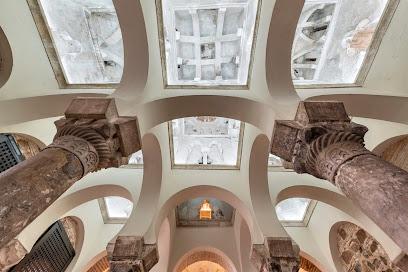
Essential places to dine
Cervecería La Abadía
Experience authentic Spanish cuisine paired with craft beer at Cervecería La Abadía in Toledo's vibrant brewpub scene.

Restaurante Venta de Aires
Experience authentic Spanish flavors at Restaurante Venta de Aires in Toledo - a must-visit culinary haven for all food lovers.
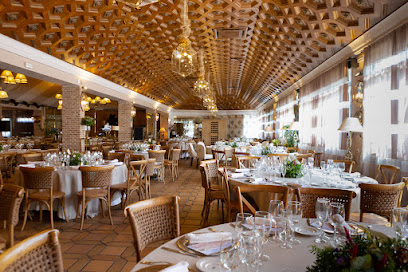
Restaurante Alfileritos 24
Experience authentic Spanish cuisine at Restaurante Alfileritos 24 in Toledo - where tradition meets flavor in an inviting ambiance.
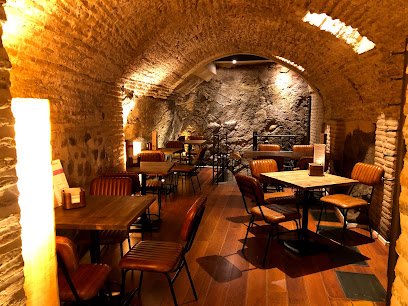
La Malquerida de la Trinidad
Experience authentic Spanish cuisine at La Malquerida de la Trinidad, Toledo's vibrant grill and cocktail bar with delightful flavors.

Taberna Cuchara de Palo
Experience authentic Spanish tapas in Toledo at Taberna Cuchara de Palo – where tradition meets flavor in every bite.

Restaurante Pizzería COMES
Discover exquisite Italian flavors at Restaurante Pizzería COMES in Toledo – home of delightful pizzas and gluten-free dishes!
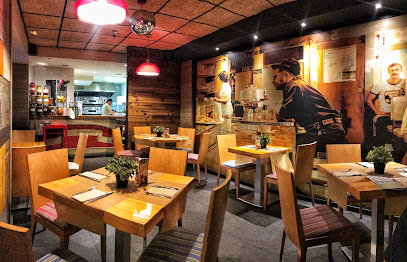
Restaurante Abrasador Toledo
Experience authentic Spanish flavors at Restaurante Abrasador Toledo - perfect for family gatherings and casual dining in the heart of Toledo.
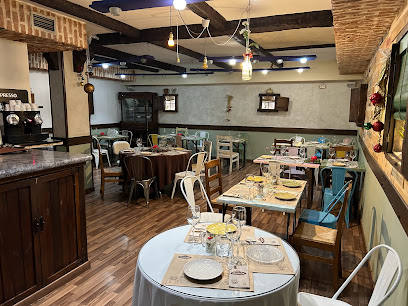
La Casa de Damasco
Discover authentic Mediterranean flavors at La Casa de Damasco in Toledo - where delicious meets affordable in a vibrant dining atmosphere.
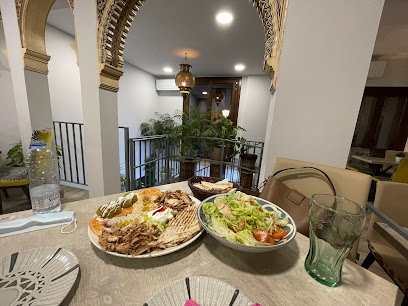
Taberna Skala
Savor exquisite Mediterranean cuisine at Taberna Skala in Toledo—your go-to destination for authentic tapas and warm hospitality.

Taberna Embrujo
Discover authentic Spanish cuisine at Taberna Embrujo in Toledo - where tradition meets flavor in a warm and inviting setting.
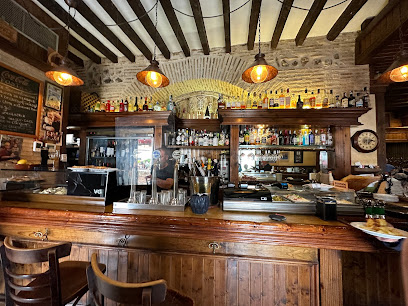
Restaurante Museo de Productos de Castilla-La Mancha
Experience authentic Spanish flavors at Restaurante Museo de Productos de Castilla-La Mancha in Toledo - A must-visit culinary destination for all food lovers.
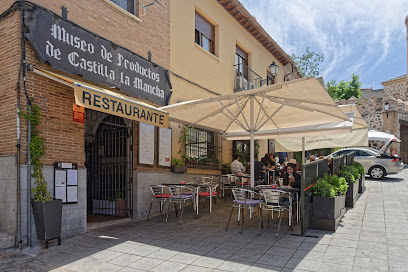
Restaurante La Cave
Experience authentic Mediterranean flavors at Restaurante La Cave, Toledo's premier destination for Spanish cuisine and delightful tapas.
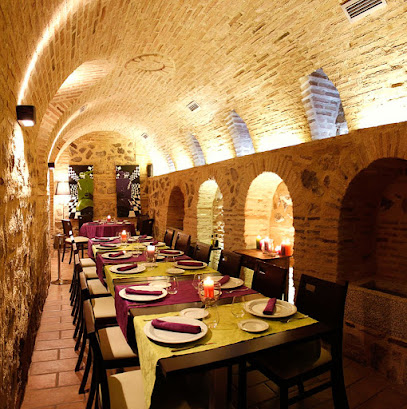
Terraza Restaurante Bu
Experience authentic Mediterranean cuisine at Terraza Restaurante Bu in Toledo - where great food meets stunning views and live music.
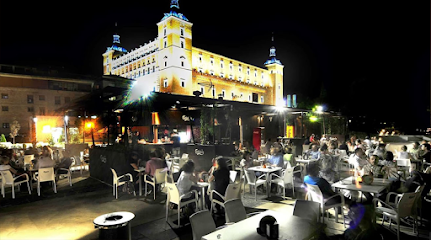
Restaurante El Peñón
Experience authentic Spanish cuisine at Restaurante El Peñón in Toledo, where grilled delicacies meet warm hospitality.
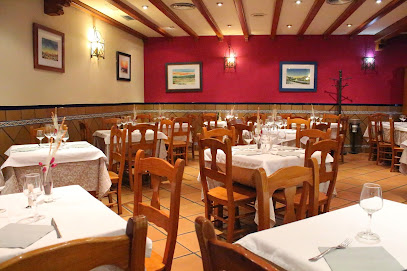
Restaurante Hierbabuena
Experience authentic Spanish cuisine at Restaurante Hierbabuena in Toledo—where tradition meets innovation in every dish.
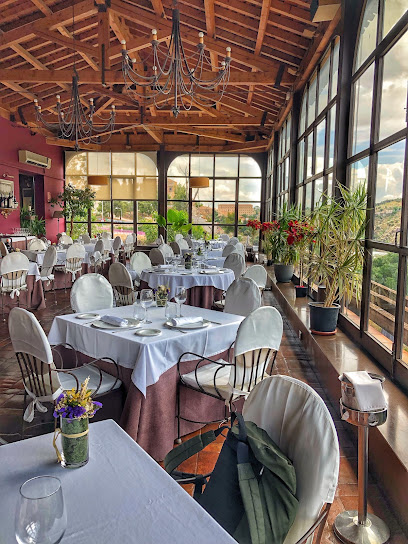
Markets, malls and hidden boutiques
Damasquinados Suárez
Explore the exquisite craftsmanship of damascene art at Damasquinados Suárez, Toledo's premier destination for artisan jewelry and decor.
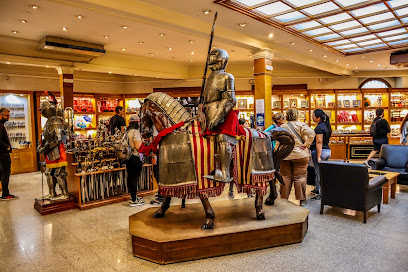
ALE-HOP
Explore ALE-HOP in Toledo for unique gifts, fashion accessories, and home goods that capture the essence of Spanish culture.
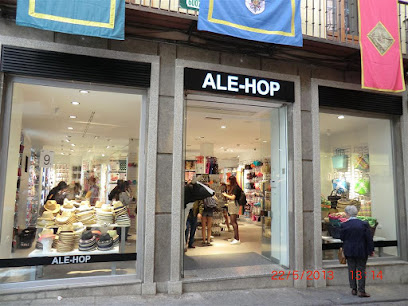
Tienda de Espadas en Toledo, espadasyorodetoledo.com
Explore the exquisite craftsmanship of swords at Tienda de Espadas in Toledo, a unique gift shop celebrating the city's rich heritage.
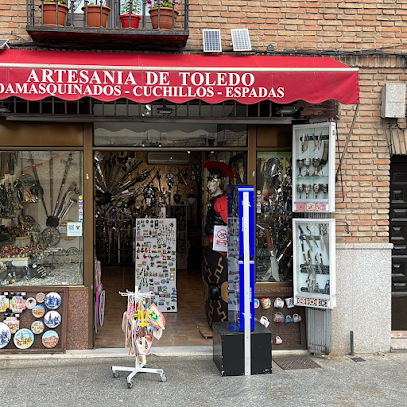
Artesanías P. Maldonado C.B . Espadasyartedetoledo.com
Explore Toledo's artisanal charm at Artesanías P. Maldonado, where handcrafted collectibles and exquisite knives await every visitor.
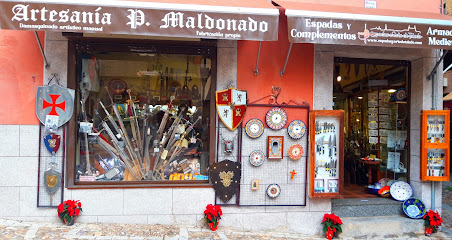
Tiger
Explore Tiger, Toledo's vibrant gift shop filled with unique home goods, toys, and creative accessories for all ages.
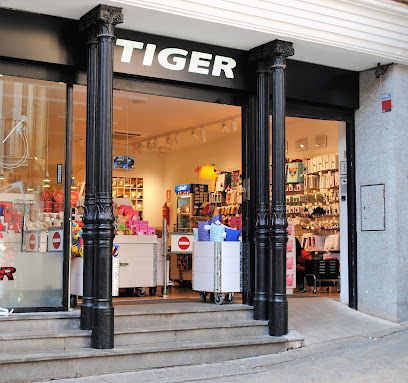
Simón Artesanía
Explore unique handicrafts and exquisite jewelry at Simón Artesanía in Toledo, where tradition meets artistry in every handcrafted piece.

Abracadabra, Tienda de Minerales y Plata.
Discover Abracadabra, Toledo's gem shop, where precious minerals and exquisite silver jewelry await every treasure hunter.
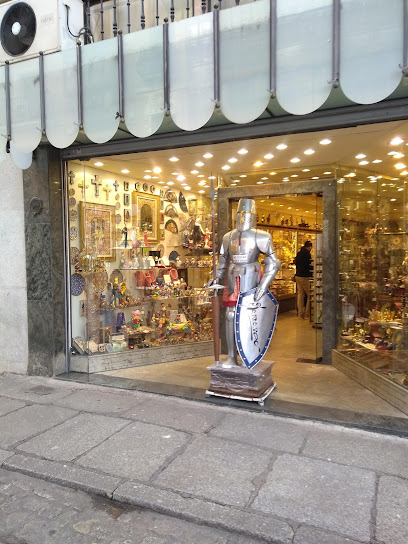
Artesanía Herrera SL
Explore Artesanía Herrera SL in Toledo for exquisite handcrafted gifts that capture the essence of Spanish artistry and culture.
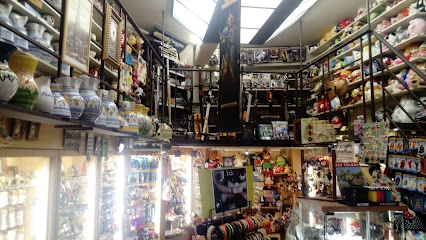
Juvi | Tienda de regalos | Artesanía de Toledo | Tienda de espadas
Explore Juvi, Toledo's artisan gift shop, and discover exquisite handcrafted souvenirs, unique jewelry, and traditional swords in a vibrant setting.
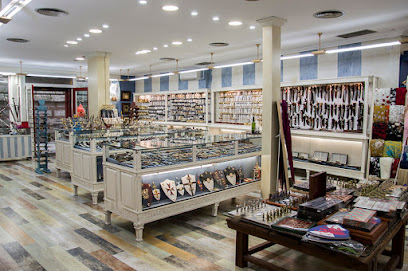
Damasquinos Bisagra
Explore Damasquinos Bisagra in Toledo for unique souvenirs that celebrate Spanish craftsmanship and culture, perfect for gifts and keepsakes.
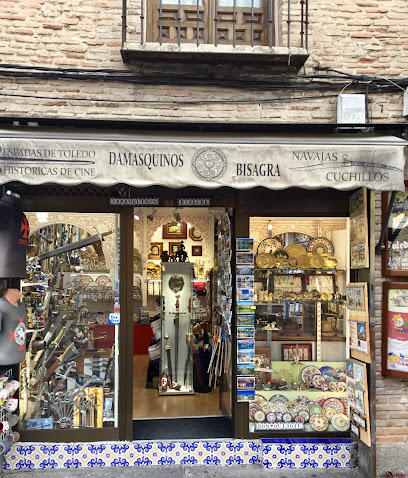
Cuquisima Shop
Discover the charm of Cuquisima Shop in Toledo, where fashion meets local flair in a delightful women's clothing boutique.
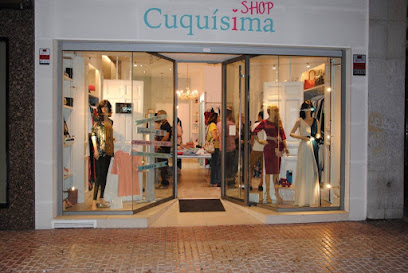
Regalos Damasco
Explore Regalos Damasco, Toledo's charming gift shop offering unique handcrafted items that capture the essence of the city's rich cultural heritage.
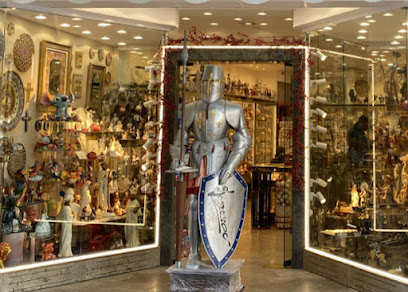
Coquette
Explore Coquette in Toledo for a unique women’s fashion experience with stylish apparel and personalized service.
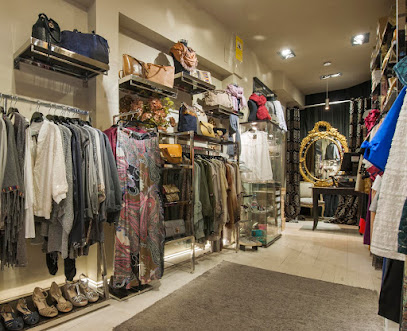
Cuerho House of Leather
Discover the art of leather craftsmanship at Cuerho House of Leather in Toledo, where tradition meets exquisite design.
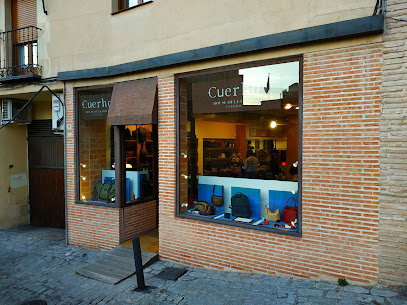
FRAGOLA TOLEDO
Explore Fragola Toledo for unique handicrafts and gifts that embody the rich culture and artistry of Spain's historic city.
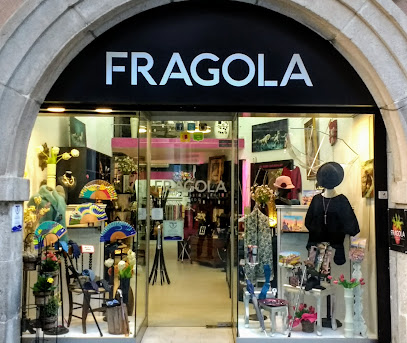
Essential bars & hidden hideouts
La Malquerida de la Trinidad
Experience the vibrant flavors of local cuisine at La Malquerida de la Trinidad, a top-rated grill and cocktail bar in Toledo, Spain.
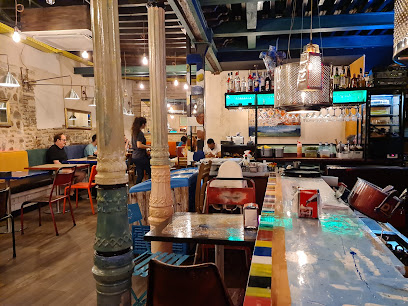
Terraza Miradero
Experience breathtaking views and local flavors at Terraza Miradero, the perfect café and bar in the heart of Toledo.
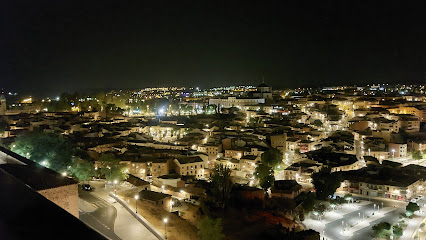
Tabernita Tapas Bar
Savor authentic Spanish tapas and local flavors at Tabernita Tapas Bar, a must-visit culinary gem in Toledo, Spain.
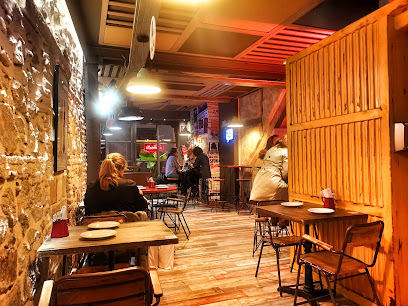
Restaurante Rinconcito Tap Station
Discover the vibrant flavors of Toledo at Restaurante Rinconcito Tap Station, where culinary delights meet a cozy atmosphere.
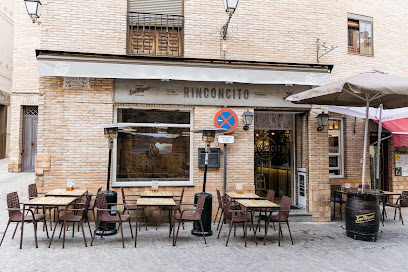
Carlos roof
Experience Toledo's breathtaking views and culinary delights at Carlos Roof, a premier rooftop bar and restaurant for tourists.
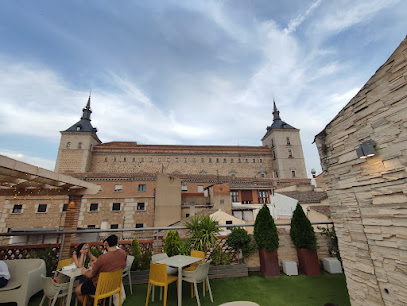
Virtudes Café Bar & Music
Experience the perfect blend of gourmet grill cuisine and live piano music at Virtudes Café Bar & Music in Toledo, Spain.
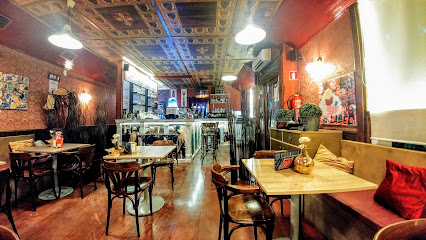
La Mona Bar
Discover the essence of Spanish dining at La Mona Bar, a top tapas bar in Toledo offering delicious dishes and a vibrant atmosphere.
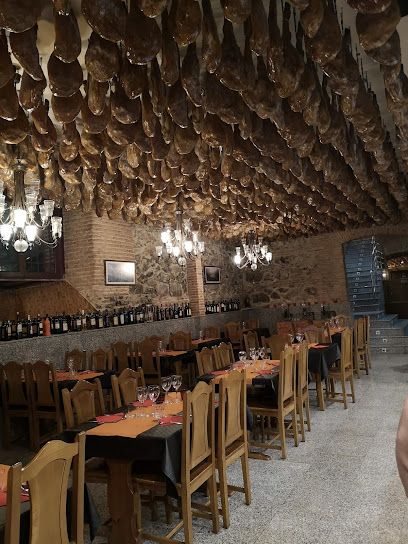
Botanic Bar Legendario
Experience the vibrant nightlife at Botanic Bar Legendario, Toledo's premier bar and lounge, offering creative cocktails and a lively atmosphere.
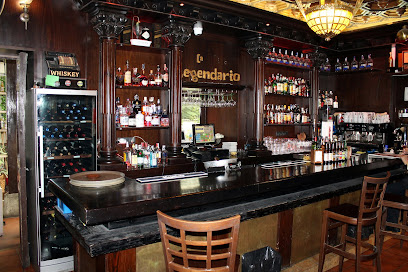
Cervecería El Tirador
Experience Toledo's vibrant culinary scene at Cervecería El Tirador, where craft beer meets authentic tapas in a charming brewpub setting.
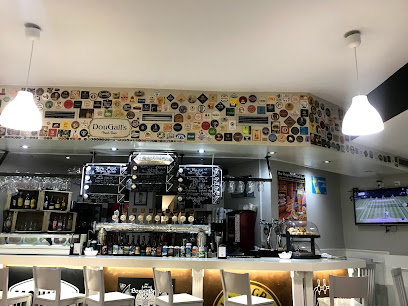
Cervecería artesanal Lúpulo Craft Beer Toledo
Discover Toledo's vibrant craft beer scene at Lúpulo Craft Beer, where local brews meet traditional Spanish flavors in a welcoming atmosphere.
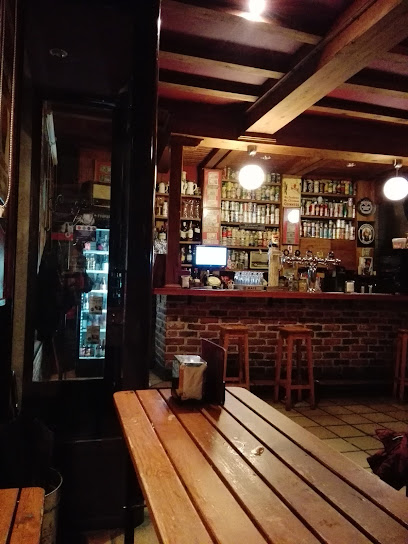
El Rincón de Juan
Explore El Rincón de Juan: A charming grill and tapas bar in Toledo offering a delightful taste of traditional Spanish cuisine.

Pub O'Briens
Discover the charm of Irish hospitality at Pub O'Briens in Toledo, where great drinks and lively atmosphere await.
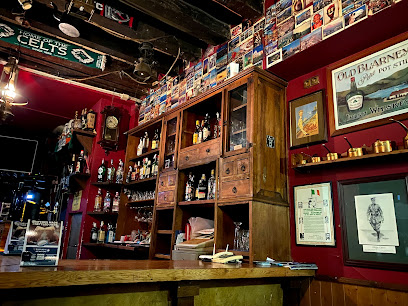
Café Blue Bar
Discover Café Blue Bar in Toledo, a vibrant dart bar offering affordable drinks, a friendly atmosphere, and fun games for everyone.

Taberna De Livingstone
Discover the lively spirit of Toledo at Taberna De Livingstone, a vibrant bar known for cocktails, darts, and a friendly atmosphere.
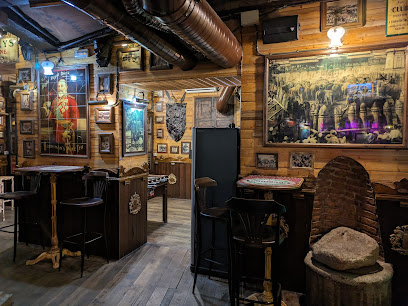
Bar La Divergente
Experience the vibrant culture of Toledo at Bar La Divergente, where local flavors and warm hospitality create unforgettable moments.
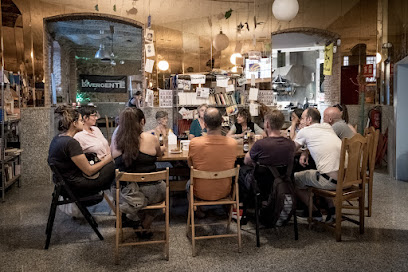
Local Phrases
-
- HelloHola
[O-la] - GoodbyeAdiós
[A-di-ós] - YesSí
[Sí] - NoNo
[No] - Please/You're welcomePor favor/De nada
[Por fa-vor/De na-da] - Thank youGracias
[Gra-cias] - Excuse me/SorryPerdón/Lo siento
[Per-dón/Lo sien-to] - How are you?¿Cómo estás?
[¿Có-mo es-tás?] - Fine. And you?Bien. ¿Y tú?
[Bién. ¿Y tú?] - Do you speak English?¿Hablas inglés?
[¿Ha-blas in-glés?] - I don't understandNo entiendo
[No en-tien-do]
- HelloHola
-
- I'd like to see the menu, pleaseMe gustaría ver la carta, por favor
[Me gus-ta-ría ver la car-ta, por fa-vor] - I don't eat meatNo como carne
[No co-mo car-ne] - Cheers!¡Salud!
[¡Sa-lud!] - I would like to pay, pleaseMe gustaría pagar, por favor
[Me gus-ta-ría pa-gar, por fa-vor]
- I'd like to see the menu, pleaseMe gustaría ver la carta, por favor
-
- Help!¡Ayuda!
[¡A-yu-da!] - Go away!¡Vete!
[¡Ve-te!] - Call the Police!¡Llama a la Policía!
[¡Ya-ma a la Po-li-cía!] - Call a doctor!¡Llama a un médico!
[¡Ya-ma a un mé-di-co!] - I'm lostEstoy perdido
[Es-toy per-di-do] - I'm illEstoy enfermo
[Es-toy en-fer-mo]
- Help!¡Ayuda!
-
- I'd like to buy...Me gustaría comprar...
[Me gus-ta-ría com-prar...] - I'm just lookingSolo estoy mirando
[So-lo es-toy mi-ran-do] - How much is it?¿Cuánto cuesta?
[¿Cúan-to cues-ta?] - That's too expensiveEsto es demasiado caro
[Es-to es de-ma-sia-do ca-ro] - Can you lower the price?¿Puedes bajar el precio?
[¿Pue-des ba-jar el pre-cio?]
- I'd like to buy...Me gustaría comprar...
-
- What time is it?¿Qué hora es?
[¿Qué ho-ra es?] - It's one o'clockEs la una
[Es la u-na] - Half past (10)Y media (10)
[Y me-dia (10)] - MorningMañana
[Ma-ña-na] - AfternoonTarde
[Tar-de] - EveningNoche
[No-che] - YesterdayAyer
[A-yer] - TodayHoy
[Hoy] - TomorrowMañana
[Ma-ña-na] - 1Uno
[U-no] - 2Dos
[Dos] - 3Tres
[Tres] - 4Cuatro
[Cua-tro] - 5Cinco
[Cin-co] - 6Seis
[Seis] - 7Siete
[Sie-te] - 8Ocho
[O-cho] - 9Nueve
[Nue-ve] - 10Diez
[Diez]
- What time is it?¿Qué hora es?
-
- Where's a/the...?¿Dónde está...?
[¿Dón-de es-tá...?] - What's the address?¿Cuál es la dirección?
[¿Cúal es la di-rec-ción?] - Can you show me (on the map)?¿Puedes mostrarme (en el mapa)?
[¿Pue-des mos-trar-me (en el ma-pa)?] - When's the next (bus)?¿Cuándo pasa el siguiente (autobús)?
[¿Cúan-do pa-sa el si-guien-te (au-to-bús)?] - A ticket (to ....)Un billete (para ....)
[Un bi-lle-te (pa-ra ....)]
- Where's a/the...?¿Dónde está...?
History of Toledo
-
Toledo's history dates back to the Roman Empire, when it was known as Toletum. The city was an important military and administrative center, evidenced by the remains of Roman roads, bridges, and fortifications that still stand today. The Roman circus and the aqueduct are key historical sites from this period.
-
In the 6th century, Toledo became the capital of the Visigothic Kingdom. This era marked the city as a political and religious center of the Iberian Peninsula. The Visigothic Council of Toledo, a series of church councils held between the 5th and 7th centuries, played a crucial role in shaping the early medieval church.
-
In 711, Toledo fell to the Moors and became an important cultural and political hub in Al-Andalus. The city flourished under Islamic rule, developing a rich tapestry of art, science, and architecture. The Mosque of Cristo de la Luz, a small yet significant mosque, stands as a testament to this period.
-
Toledo was reconquered by King Alfonso VI of Castile in 1085 during the Reconquista. This event marked a turning point as the city was transformed into a center of Christian power. The construction of the Toledo Cathedral, one of Spain's greatest Gothic structures, began in the 13th century and symbolized this new era.
-
During the Middle Ages, Toledo became a melting pot of Christian, Muslim, and Jewish cultures. This unique blend led to the establishment of the Toledo School of Translators in the 12th and 13th centuries. Scholars from various backgrounds worked together to translate crucial scientific, medical, and philosophical texts from Arabic and Hebrew into Latin.
-
In the 16th century, under the reign of Charles V and Philip II, Toledo served as the imperial capital of Spain. The city experienced a golden age, marked by monumental architecture such as the Alcázar of Toledo and the Hospital de Tavera. Artists like El Greco also contributed to Toledo's cultural and artistic heritage during this period.
-
The 19th and 20th centuries brought industrialization and modernization to Toledo. Despite the changes, the city managed to preserve its historical essence. It was declared a UNESCO World Heritage Site in 1986, recognizing its extensive cultural and historical significance.
Toledo Essentials
-
Toledo is located in the central part of Spain, approximately 70 kilometers south of Madrid. The nearest airport is Adolfo Suárez Madrid-Barajas Airport (MAD) in Madrid. From Madrid, you can take a high-speed train (AVE) from Madrid's Atocha Station to Toledo, which takes about 30 minutes. Alternatively, there are regular buses from Madrid's Estación Sur de Autobuses to Toledo, with a journey time of around one hour. Driving is another option, taking the A-42 highway from Madrid to Toledo.
-
Toledo is a compact city best explored on foot, especially the historic center with its narrow, winding streets. For longer distances within the city, local buses operated by Unauto are convenient and cover most areas of interest. Taxis are also available and can be hailed on the street or booked via phone. Renting a car is an option if you plan to explore the surrounding areas, but parking can be challenging within the historic center.
-
The official currency in Spain is the Euro (EUR). Credit and debit cards are widely accepted in hotels, restaurants, and shops in Toledo. ATMs are readily available throughout the city, so it’s easy to withdraw cash as needed. It's a good idea to carry some cash for smaller establishments or markets where card payments might not be accepted.
-
Toledo is generally a safe city for tourists. However, like any popular tourist destination, it's important to stay vigilant. Pickpocketing can occur, especially in crowded areas like the Zocodover Square and near major attractions such as the Toledo Cathedral. Avoid walking alone at night in poorly lit areas, and always keep an eye on your belongings. There are no specific high-crime neighborhoods, but always exercise standard travel precautions.
-
In case of an emergency, dial 112 for immediate assistance, which connects you to police, fire, and medical services. The main hospital in Toledo is Hospital Virgen de la Salud, which provides comprehensive medical care. Pharmacies are widely available for minor health concerns. It's advisable to have travel insurance that covers medical emergencies.
-
Fashion: Do dress modestly, particularly when visiting religious sites. Avoid overly casual attire like shorts and flip-flops in such locations. Religion: Do respect local customs and traditions. When entering churches, cover your shoulders and knees, and remain quiet. Public Transport: Do be respectful to other passengers and give up your seat to elderly or disabled individuals. Don't eat or drink on public transport. Greetings: Do greet people with a 'Hola' or 'Buenos días.' A handshake is standard during initial meetings. Eating & Drinking: Do try local dishes like 'marzipan' and 'partridge stew.' Don't rush through meals; Spaniards take their time dining.
-
To experience Toledo like a local, visit the Mercado de San Agustín for a taste of local cuisine and fresh produce. Walk along the Tagus River for stunning views and a peaceful escape from the busy city center. Participate in local festivals such as Corpus Christi, which features elaborate processions and decorations. For a unique experience, take a walk across the Alcántara Bridge and explore the lesser-known neighborhoods on the city's outskirts.
Trending Landmark in Toledo
-
Alcázar de Toledo
-
Santa Iglesia Catedral Primada de Toledo
-
Mirador del Valle
-
San Martin's Bridge
-
Puerta de Bisagra
-
Alcantara Bridge
-
Monasterio de San Juan de los Reyes
-
Iglesia de Santo Tomé
-
Sinagoga de Santa María La Blanca
-
Museo del Greco
-
Mezquita del Cristo de la Luz
-
Sinagoga del Tránsito
-
Museum of Santa Cruz
-
Puerta del Cambrón
-
Cuevas de Hércules
Nearby Cities to Toledo
-
Things To Do in Madrid
-
Things To Do in Avila
-
Things To Do in Segovia
-
Things To Do in Salamanca
-
Things To Do in Valladolid
-
Things To Do in Teruel
-
Things To Do in Badajoz
-
Things To Do in Burgos
-
Things To Do in Bragança
-
Things To Do in Valencia
-
Things To Do in Seville
-
Things To Do in Murcia
-
Things To Do in Zaragoza
-
Things To Do in Lamego
-
Things To Do in Alicante

















